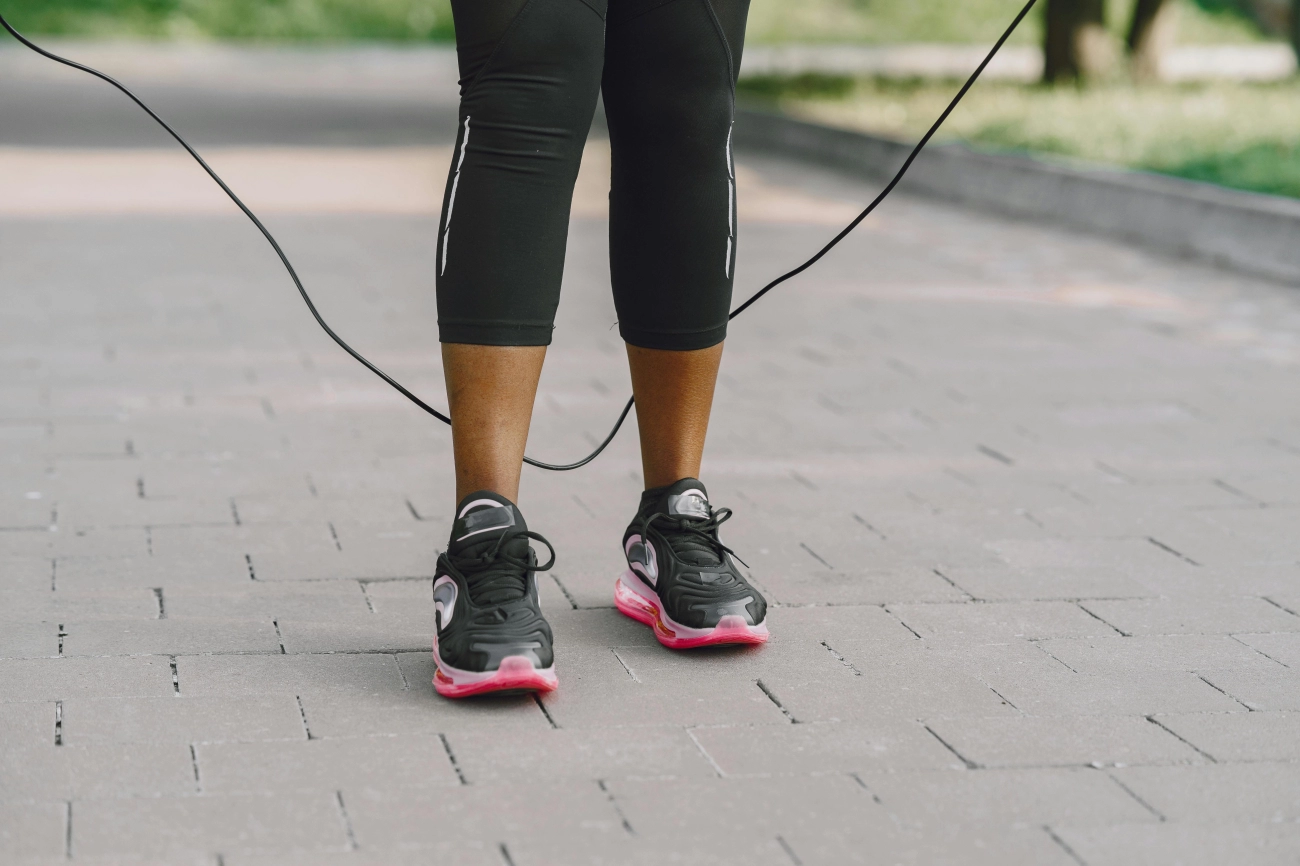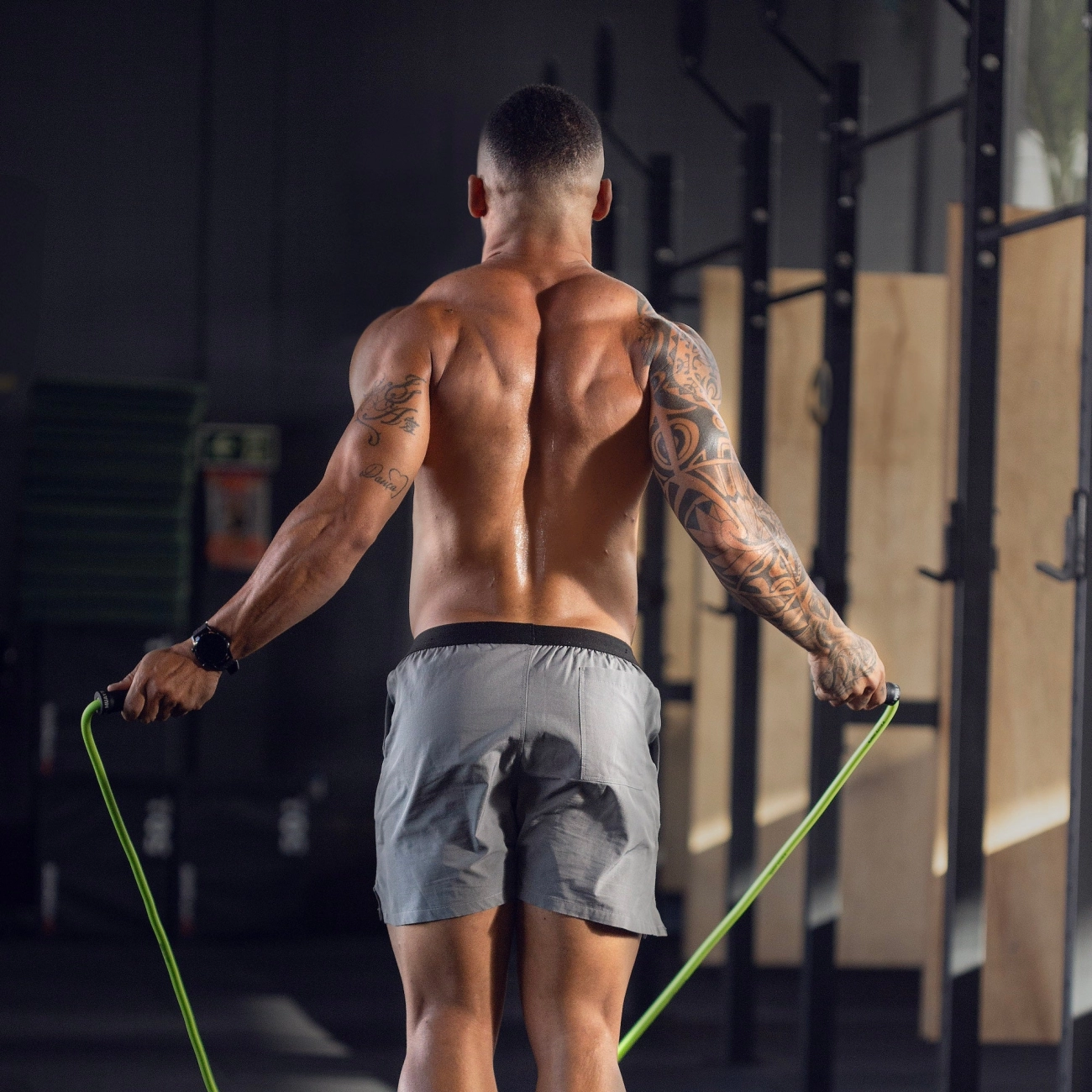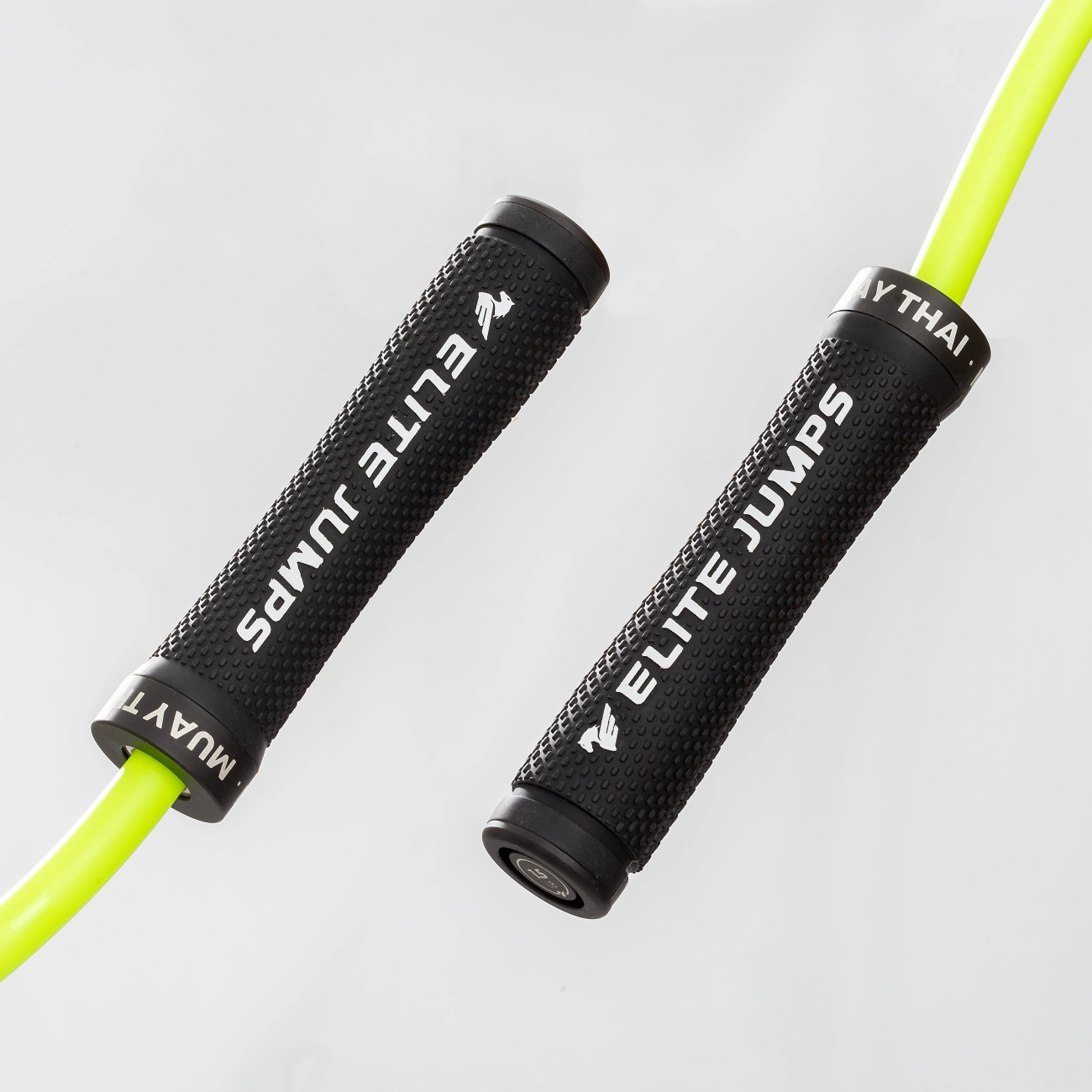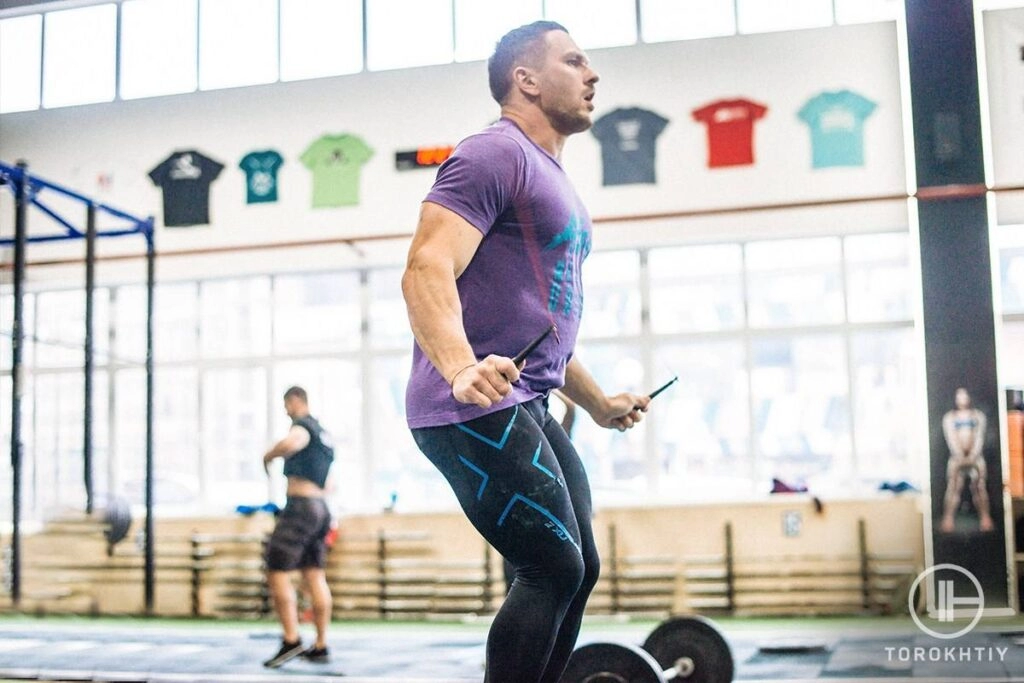Understanding the Side Swing Technique for Jump Rope
The jump rope side swing is a distinct movement where the rope swings to the side of your body instead of passing underneath your feet like in basic jump rope strokes. Unlike the standard basic jump where the rope spins forward in a circular motion and you jump over it, the side swing involves rotating the rope along your side, creating a lateral swinging motion. This technique doesn’t require jumping over the rope on every rotation, making it an excellent skill to develop timing and coordination.
How the Side Swing Differs from Basic Jump Rope Strokes
- Basic jump rope strokes focus on a continuous forward swing with jumps timed to clear the rope each time.
- In contrast, the side swing moves the rope beside you, usually avoiding traditional jumping every rotation. This allows for a more fluid, rhythmic flow and is often used as a transitional move or recovery stroke during workouts.
Key Muscles and Coordination Involved in Side Swing
Mastering the side swing engages a coordinated effort of several muscle groups and motor skills:
- Forearms and wrists: The primary drivers of the rope’s side-to-side motion, requiring control and smooth, small rotations.
- Shoulders: Stabilize arm positioning and enable efficient lateral swinging without excessive movement.
- Core muscles: Help maintain balance and posture, providing stability during arm and foot coordination.
- Leg muscles and ankles: Coordinate subtle foot placement and timing, especially when transitioning from side swings to jumps.
- Hand-eye coordination: Essential to synchronize rope movement with footwork, preventing tangles and tripping.
Building this coordination is key for progressing from beginner side swings to more advanced jump rope combos. The side swing is a foundational technique that sharpens rhythm and body control, making it a valuable skill for both beginners and experienced jumpers.
Essential Equipment and Preparation for Jump Rope Side Swing

Recommended Ropes for Side Swing Techniques
When it comes to mastering the jump rope side swing technique, having the right rope is key. I recommend using PVC ropes from PVCJumpRope.com. These ropes are made specifically for smooth, fast swings and hold up well over time, making them perfect for side swings. Their lightweight design helps with quick wrist movements, which is critical for controlling the rope as it swings to the side instead of under your feet.
Ideal Rope Length and Type for Side Swing
Choosing the right rope length matters a lot. For side swings, you want a rope that’s:
- Long enough to clear your body easily during wider side arcs
- Short enough so it doesn’t drag or tangle as you swing it side to side
The common rule for sizing: stand on the middle of the rope with one foot, and the handles should reach roughly to your armpits. PVC ropes generally come adjustable, which helps you find the perfect length for your height and style.
Proper Footwear and Workout Space Setup
Safety first. For your jump rope side swing workout, wear shoes with:
- Good cushioning
- Solid arch support
- Non-slip soles
This reduces the impact on your joints and helps keep you steady.
Also, pick a workout area with a flat, shock-absorbent surface like a gym mat or wood floor. Avoid concrete because it’s too hard and increases injury risk. Make sure you have enough space around you so the rope doesn’t hit walls or furniture during side swings.
Warm-up Exercises Specific for Jump Rope Routines
Warming up properly sets you up for success. For side swing jumps, focus on exercises that get your wrists, shoulders, calves, and ankles ready:
- Arm circles: loosen shoulder and wrist joints
- Calf raises: prime your heart and leg muscles
- Ankle rolls: improve mobility and prevent twists
- Light jogging or jumping jacks: boost your heart rate safely
Spending 5 minutes on these will improve your coordination and reduce the chance of strains when you start side swinging.
In short: Use a quality PVC rope from PVCJumpRope.com, get the right rope length, wear proper shoes, clear a safe workout spot, and warm up your whole body before jumping. This setup makes learning the jump rope side swing technique easier and safer.
Step by Step Jump Rope Side Swing Tutorial
Starting Position and Grip Tips
Begin with your feet shoulder-width apart. Hold the jump rope handles lightly but firmly at your sides with your palms facing in. Keep your elbows close to your body to maintain control. A relaxed grip prevents unnecessary tension, helping your wrists move smoothly for side swings.
How to Initiate the Side Swing Motion
The key to the jump rope side swing technique is directing the rope to swing to your side instead of under your feet. Use your wrists and forearms, not your whole arms, to guide the rope. Rotate your right wrist outward to swing the rope to the right, then the left wrist to bring it to the left side. Avoid large arm movements to keep the swings controlled and efficient.
Foot Placement and Timing
While the rope swings to the side, keep both feet on the ground or practice small hops to stay balanced. Time your feet so you only jump when you return to a regular jump or when you want to add basic hops. Don’t jump during the side swings, as the rope stays away from your feet. This coordination is crucial for smooth side swing movements.
Breathing and Rhythm Guidance
Maintain a steady breathing rhythm. Inhale during slower side swings and exhale as you transition back to regular jumps or quicker swings. Finding your rhythm helps you stay relaxed and consistent, especially when combining side swings with other jump rope exercises.
Common Beginner Mistakes and How to Fix Them
- Swinging the rope under your feet instead of the side: Focus on wrist rotation and keep your arms closer to your body.
- Using big arm swings: Minimize movement by keeping motions tight and controlled.
- Jumping during the side swing: Remember, side swings are about shifting the rope sideways with no jump needed.
- Stiff wrists and tense grip: Loosen your grip and focus on wrist flexibility.
Practice these corrections slowly to build muscle memory.
Progression Tips From Slow Swings to Continuous Side Swings
- Start by practicing slow, deliberate side swings to get comfortable with the movement.
- Once confident, increase speed gradually, emphasizing smooth wrist rotations.
- Begin incorporating small jumps between side swings to add flow.
- Build up to continuous side swings with minimal pauses, mixing in other jump rope moves for variety.
Progressing step by step will improve your coordination and endurance while mastering the side swing jump rope technique.
Incorporating Side Swing into Jump Rope Workouts

Adding the jump rope side swing technique to your routine boosts variety and challenges your coordination. It’s a smooth transition from basic moves and mixes well with other jump rope exercises like basic jumps, crossovers, and even double unders.
Combining Side Swing with Other Jump Rope Exercises
- Start with basic jumps as a warm-up, then shift into side swings for a change of pace.
- Try alternating side swings and crossovers to work on timing and wrist control.
- Mix in double unders or high knees after a side swing set to elevate your heart rate.
- Use intervals like 30 seconds of side swings followed by 30 seconds of basic jumps for endurance.
Sample Beginner and Intermediate Side Swing Workout Routines
Beginner Routine:
- 1 minute basic jump
- 30 seconds side swing (slow pace)
- 1 minute rest
- Repeat 3 rounds
Intermediate Routine:
- 30 seconds side swing (steady pace)
- 30 seconds crossovers
- 30 seconds high knees jump rope
- 1-minute rest
- Repeat 4-5 rounds
This gradual increase helps build coordination and stamina without feeling overwhelming.
Tips to Increase Speed and Endurance with Side Swing
- Focus on light wrist movements rather than big arm swings to speed up your rope rotations.
- Maintain a steady breathing rhythm to avoid early fatigue.
- Practice short bursts of fast side swings, then slow down to recover — this helps build speed endurance.
- Use high-quality ropes like PVC ropes from PVCJumpRope.com which are lightweight and responsive, helping maintain rhythm at faster speeds.
- Consistency matters. Aim for at least 3-4 jump rope sessions a week incorporating side swings for noticeable improvement in endurance.
Mastering the side swing adds agility and flow to your workouts. Incorporate it smartly with other moves and watch your coordination and fitness level rise.
Troubleshooting Jump Rope Side Swing Issues and FAQs
When learning the jump rope side swing technique, it’s common to face a few hurdles like the rope hitting your feet or getting tangled. Understanding these problems and how to fix them can significantly improve your flow and confidence.
Why the Rope Hits the Feet or Gets Tangled
- Rope length mismatch: A rope that’s too long or too short causes poor clearance, leading to hitting your feet or tripping. The ideal length typically reaches just under your armpits when you stand on the rope—adjustable PVC ropes from PVCJumpRope.com make this easy.
- Timing and coordination: Side swings need precise timing between arm movement and foot placement. Swing the rope to the side (not straight under your feet) and time your jumps accordingly.
- Arm and wrist control: Beginners often use too much arm movement instead of wrist flicks, making the rope swing uneven and more prone to tangling.
- Rope tension: Keep the rope taut but not too tight. A slack rope slows down reaction time and increases chances of tripping.
How to Improve Coordination and Control for Side Swing Jump Rope
- Practice wrist flicks only: Focus on moving your wrists rather than the whole arms to get a smooth, controlled side swing.
- Start slow and build rhythm: Begin with slow side swings and simple foot placement. Use a count or tap your foot on the ground to maintain rhythm.
- Drills for coordination: Try alternate foot taps or side-to-side stepping without the rope first to establish the movement pattern.
- Use mirrors or video feedback: Watching yourself jump helps identify irregularities in your swing or timing.
- Consistent practice: Daily practice short sessions improve muscle memory faster.
Dealing with Rope Length Issues and Rope Wear for Side Swing Jump Ropes
- Adjustable rope length is key: Side swings benefit from precise rope lengths. If your rope isn’t adjustable, consider PVC ropes like the ones sold at PVCJumpRope.com that allow quick length tweaks.
- Signs of rope wear and tear: Look for cracks, stiffness, or uneven thickness. These affect the smoothness of side swings and increase tangling risk.
- Why PVC ropes are a good choice: Durable, lightweight PVC ropes withstand regular side swing stress better than fabric or beaded ropes, making them ideal for Freestyle and fitness jumps.
- Regular maintenance: Clean your rope after workouts and store it properly to extend its life.
If your rope continually tangles or hits your feet, it’s often a mix of length and technique issues. Focus on adjusting your rope length, improving wrist control, and practicing smooth side swings to overcome these common challenges. For more in-depth tips on jump rope skills, also check out our guide on proper jump rope form.
Benefits of Mastering the Jump Rope Side Swing Technique
Mastering the jump rope side swing moves beyond just adding variety to your workout — it brings several important benefits that improve your overall fitness and rope skills.
Improved Agility Coordination and Cardiovascular Fitness
The side swing jump rope technique requires precise timing and coordination between your arms, wrists, and footwork. Practicing it regularly helps you:
- Boost agility by training quick lateral movements.
- Enhance hand-eye coordination with rhythmic side swings.
- Increase cardiovascular endurance as continuous side swings keep your heart rate elevated.
- Develop better body control, which transfers well into other athletic activities and sports requiring quick reflexes.
Enhanced Jump Rope Skillset for Fitness and Sport
Adding the side swing to your jump rope routine elevates your technique beyond the basic strokes. This means:
- You achieve a more complete workout, engaging different muscle groups compared to basic jumps.
- The skill sharpens wrist and forearm strength, essential for advanced jump rope tricks.
- It provides a foundation for learning complex jump rope combos and freestyle moves.
- Progressing with side swings builds confidence to try crossovers, double unders, and other advanced jump rope tricks.
Versatility for Freestyle and Advanced Jump Rope Workouts
The side swing is highly versatile and fits well into various jump rope workouts:
- It allows smooth transitions into other jump rope styles, keeping your routines fresh and challenging.
- Side swings are effective warm-up or active recovery moves during high-intensity interval training (HIIT) jump rope sessions.
- They help develop foot speed and rhythm, key for sports like boxing, basketball, and MMA.
- Side swings can be done slowly for coordination or sped up to raise intensity, making them adaptable for all fitness levels.
In short, mastering the jump rope side swing unlocks new training possibilities, improves your overall coordination, and amps up your cardio workout — all while prepping you for more advanced jump rope skills.
Why Choose PVCJumpRopecom for Your Jump Rope Needs
When it comes to mastering the jump rope side swing technique, having the right rope makes all the difference. At PVCJumpRope.com, we specialize in durable, lightweight PVC jump ropes crafted specifically to support smooth and efficient side swing movements. Our ropes are designed to reduce drag and allow for quick, fluid swings, making them perfect for beginners and advanced users alike.
Premium Quality Ropes Made for Side Swing
- Durability: Our PVC ropes withstand regular use without fraying or breaking easily, ideal for high-frequency jump rope workouts.
- Lightweight design: Helps improve control and wrist coordination, which is critical in side swing techniques.
- Optimal length options: Customized rope lengths ensure the perfect fit for every height, helping prevent tangles and foot hits.
What Customers Say About PVCJumpRopecom
Many users across the U.S. have noticed clear improvements in their jump rope side swing practice using our ropes:
- “I switched to PVCJumpRope.com ropes and my side swing speed and rhythm got much better. The rope feels balanced and smooth.” – Sarah M., California
- “Great quality and shipping was fast. The rope length options were spot on for my height.” – Mike T., Texas
Easy Purchase and Reliable Shipping Within the U.S.
- Quick ordering process on PVCJumpRope.com with clear sizing guides.
- Fast and affordable shipping across the continental United States.
- Responsive customer support to help with any questions on rope selection or maintenance.
For anyone looking to improve their jump rope side swing technique, choosing a quality PVC rope from PVCJumpRope.com is a smart move. The durability, lightweight feel, and perfect sizing will give you confidence and control in your workouts.



